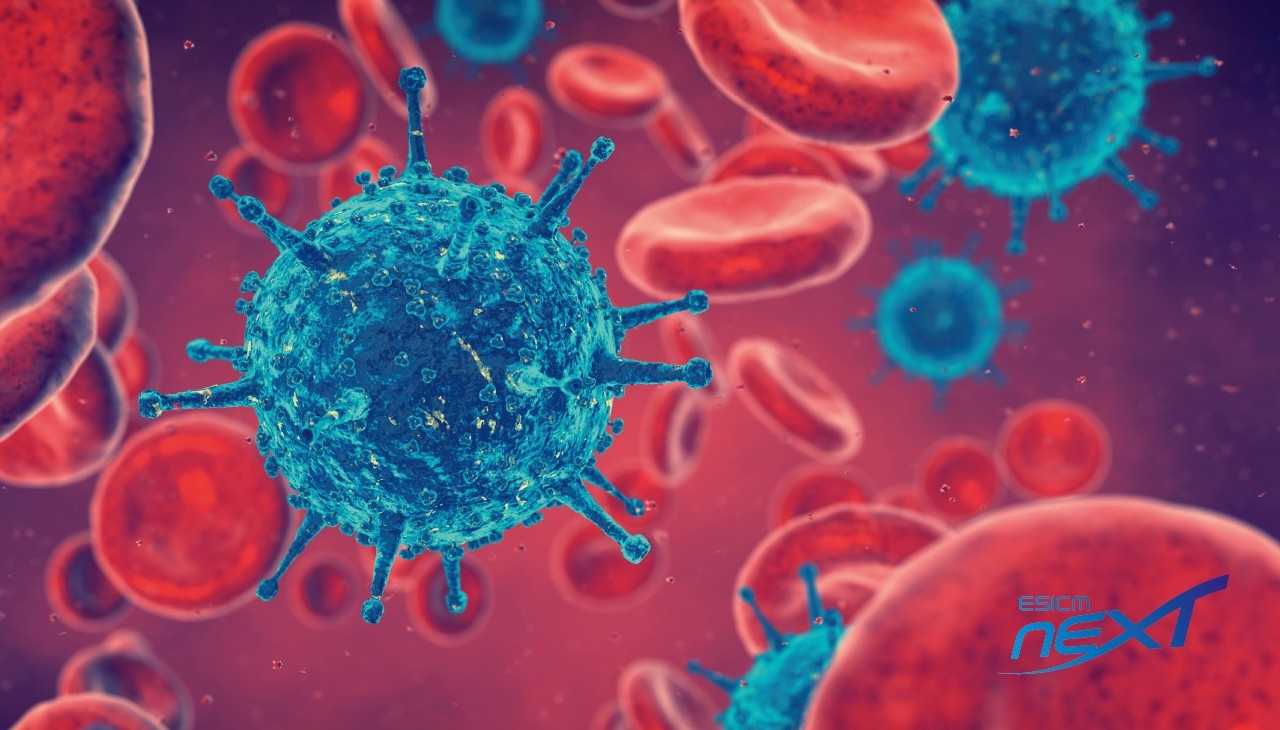Article Review: bloodstream infections in COVID-19 patients

A review of a case-cohort study from the multicentric OUTCOMEREA network
ICU patients are more prone to develop hospital-acquired infections, particularly ICU-acquired bloodstream infections (ICU-BSI), associated with increased morbidity and mortality. Twenty per cent of patients with COVID-19 require admission to ICU due to acute respiratory distress syndrome (ARDS).
Buetti et al. conducted a matched case-cohort study to assess whether COVID-19 patients have an increased risk of contracting ICU-BSI.
Adult patients (age >18 years) with ARDS requiring mechanical ventilation, admitted to ICUs where both COVID-19 and non-COVID-19 patients were treated, were enrolled; exclusion criteria were diagnosis of BSI at the admission and ICU length of stay <48 hours.
Data were collected prospectively from the OutcomeRea database, a large French ICU cohort.
ICU-BSI was defined as the onset of an infection that occurred >48 hours after ICU admission. Catheter-related BSI (CRBSI) was diagnosed with positive quantitative tip culture according to the French and American definitions. Only the first ICU-BSI was included in the statistical analysis.
Patients were selected using a matched-cohort approach without replacement, aiming to create similar populations between COVID-19 and non-COVID-19 patients and exclude factors that could influence BSI incidence.
Matching criteria were: ICU admission category (medical vs surgical), age, sex, SOFA score and intubation in the two first ICU days. Adequate matching was assessed through standard mean differences (SMD) for each variable, with a threshold of ≥ 0.20 to identify potentially important imbalances. Among matched patients, the effect of COVID-19 on the probability to develop a BSI was estimated with Fine and Gray models [subdistribution hazard ratios (sHR) >1 indicated an increased risk for ICU-BSI].
Additional/explanatory analyses were performed adjusting for antibiotics received in the first two days after admission, using controls only from 2015 onwards, using CRBSI as endpoint instead of ICU-BSI.
Finally, a sub-analysis of COVID-19 patients was performed to evaluate corticosteroids or IL-antagonists’ effect on ICU-BSI.
From six ICUs, 235 COVID-19 patients matched with 235 controls. Among COVID-19 patients, matched and unmatched populations were similar; however, matched COVID-19 patients were more often male (80% vs 65%, p=0.006) and had a higher median SOFA score (5 vs 4, p=0.009). Antibiotics administration at ICU admission was more frequent in COVID-19 patients (79% vs 68%, p=0.006).
The incidence of ICU-BSI was significantly higher in the COVID-19 group than non-COVID-19 (14.9% vs 3.4% respectively, p ≤ 0.0001). Among COVID-19 patients, ICU-BSIs occurred in median 12 (IQR 9-16) day after ICU admission, while for non-COVID-19, the median time was 6.5 days (IQR 5-12.5, p = 0.086). Moreover, COVID-19 patients had an increased daily risk of developing ICU-BSI (sHR 4.50, 95% CI 1.82 – 11.16, p = 0.0012).
The risk significantly increased after 7 days from ICU admission, with an estimated sHR 8.74 on day 7. Similar results were obtained after adjustment for antibiotics administration in the first 2 days (sHR 5.03, 95% CI 1.91–13.29, p = 0.001) and after exclusion of controls enrolled before 2015 (sHR 3.00, 95% CI 1.23–7.34, p = 0.016).
Coagulase Negative Streptococci (CoNS) and Enterococci tended to be more frequently observed in the COVID-19 group, with the source of infection more often unknown. In the case of infection of unknown origin, bacteria that live in the digestive tract were more frequently detected among COVID-19 patients, while CoNS were more frequent among non-COVID-19 ones. According to the proportion of subdistribution hazard models, COVID-19 increased the daily risk of ICU-BSI (sHR 2.11, 95% CI 1.16–3.83, p = 0.014).
Concerning CRBSIs, 10 cases (0.9%) were observed in the non-COVID-19 group versus 8 cases (3.4%) in the COVID-19 group, with no statistically significant increase of CRBIS risk due to COVID-19 (sHR 2.50, 95% CI 0.71–8.83, p = 0.15).
Regarding immunomodulatory drugs, 21 COVID-19 patients received anakinra, and 9 patients received tocilizumab. Patients who received anakinra or tocilizumab showed a significantly increased risk for ICU-BSI (sHR 3.20, 95% CI 1.31–7.81, p = 0.011). Corticosteroids in the first 2 days did not increase the risk for ICU-BSI (HR 0.85, 95% CI 0.39–1.84, p = 0.67).
Although the purpose of the study was not to investigate the causes of the different risk of ICU-BSI among COVID-19 patients, considering the results obtained from the explanatory analysis, the authors advanced the hypothesis that immunomodulatory therapies and some pathogenetic mechanisms of SARS-CoV2 (i.e., acquired immunosuppression coagulopathy that may affect the micro- and macrocirculation with increased bacterial translocation, and endothelial dysfunction of the digestive tract) may play a role in increasing the risk of ICU-BSI.
STUDY STRENGTHS & LIMITATIONS
Strengths:
• Few studies had previously focused on BSI in COVID-19 patients, and this is the first one comparing COVID-19 and non-COVID-19 patients.
Limitations:
• Matched COVID-19 patients had slightly increased SOFA score than non-matched COVID-19 patients so that the analysis may represent the most critically ill COVID-19 patients.
• The selected threshold to identify imbalances was ≥ 0.20, although the authors reduced the risk of imbalance due to confounding by using two different matching methods that showed the same results.
• Only six French ICUs were included, thus limiting the generalisability of the results.
• ICU-BSIs were the only infections taken into account, excluding from the study other hospital-acquired infections.
• Mortality associated with ICU-BSIs was not investigated.
• Only the first episode of ICU-BSI was considered, and no conclusions on subsequent BSIs were drawn.
• The causality between IL-antagonists and ICU-BSI occurrence was hypothesised from exploratory analysis; thus, it must be interpreted with caution.
TAKE HOME MESSAGE
COVID-19 patients have a higher risk of acquiring ICU-BSI compared to non-COVID-19 patients. The risk increases significantly after seven days of ICU stay.
This article review was prepared and submitted by Dr Claudia Stella and Dr Temistocle Taccheri, Fondazione Policlinico Universitario Agostino Gemelli IRCCS, Rome (Italy), on behalf of the ESICM Journal Review Club
REFERENCE
Buetti N. et al. ~ COVID-19 increased the risk of ICU-acquired bloodstream infections: a case–cohort study from the multicentric OUTCOMEREA network. Intensive Care Med. 2021 Jan;47(1):180-187.